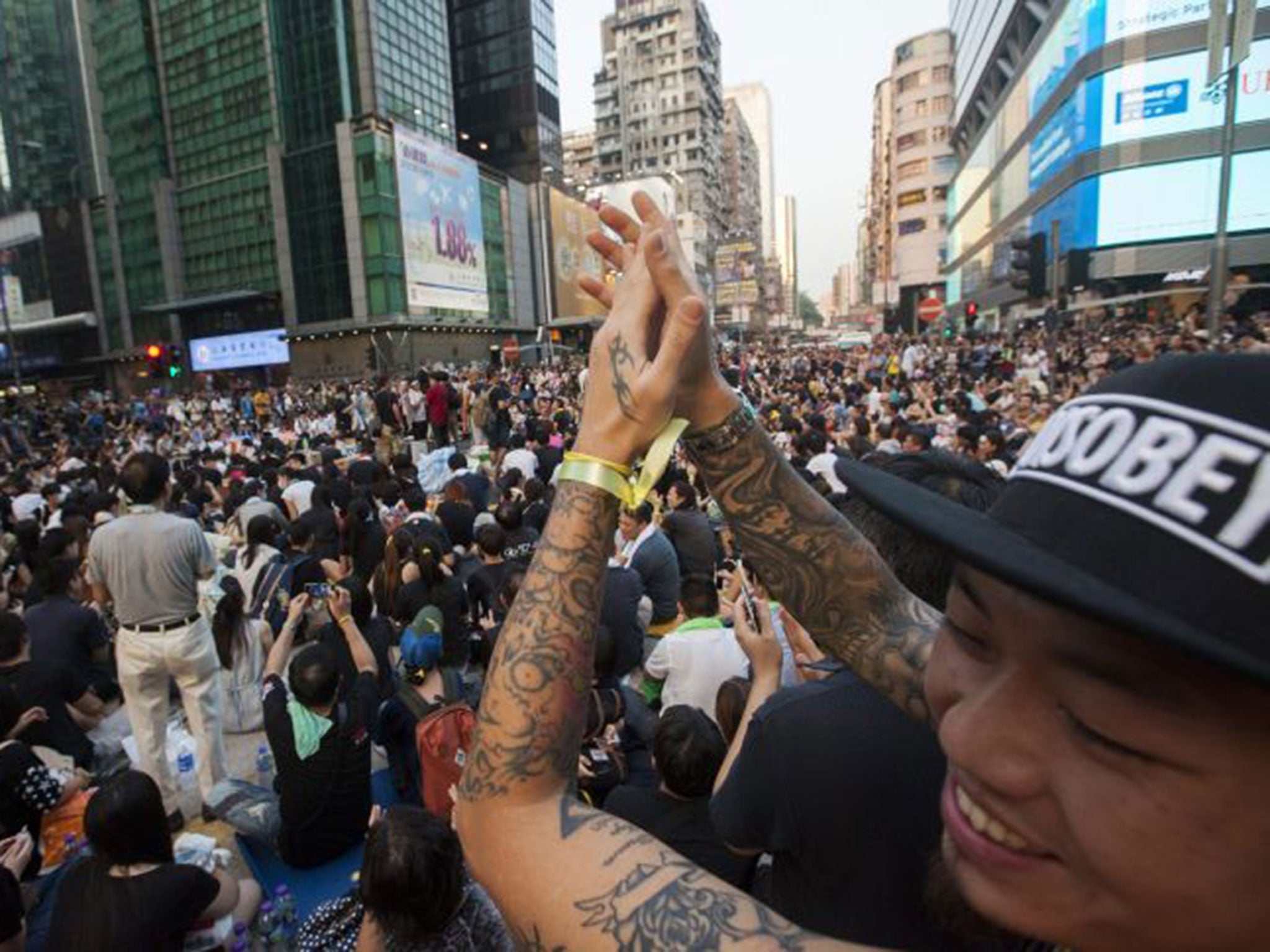Hong Kong protests: A guide to yellow ribbons, blue ribbons and all the other colours
Protesters in opposing camps are using ribbons to symbolise their stance

Your support helps us to tell the story
From reproductive rights to climate change to Big Tech, The Independent is on the ground when the story is developing. Whether it's investigating the financials of Elon Musk's pro-Trump PAC or producing our latest documentary, 'The A Word', which shines a light on the American women fighting for reproductive rights, we know how important it is to parse out the facts from the messaging.
At such a critical moment in US history, we need reporters on the ground. Your donation allows us to keep sending journalists to speak to both sides of the story.
The Independent is trusted by Americans across the entire political spectrum. And unlike many other quality news outlets, we choose not to lock Americans out of our reporting and analysis with paywalls. We believe quality journalism should be available to everyone, paid for by those who can afford it.
Your support makes all the difference.The Hong Kong pro-democracy protests, known as the Umbrella Revolution, have become symbolised by the yellow ribbons worn by supporters and seen fluttering around the city.
But as the demonstrations continue, a rainbow selection of ribbons has emerged to represent the varying opinions in the complex debate.
So what do they mean and who wears them?
Yellow ribbons
The original symbol can be seen adorning thousands of lapels in Hong Kong and around the world for people wanting to show support for the movement.
Yellow ribbons have also been tied to fences and trees around the city, with protesters using Tie a Yellow Ribbon Round the Old Oak Tree as a protest song.
Pictures of them are being used as profile pictures on social networking sites to show solidarity and 1 October was declared “Wear Yellow for Hong Kong” day around the world.
The colour symbolises the campaign for universal suffrage and was previously used in the women’s vote campaign in the US in the 19th Century.
Blue ribbons
Protesters and their supporters condemned the police response to the start of the occupation, when unarmed protesters were showered with tear gas and pepper spray by armed officers.
But not everyone in Hong Kong agrees with the Occupy Central movement and some have taken to wearing blue ribbons to show their support for police and the authorities instead.
The colour of police uniforms, wearers say it represents their wish to return “order” to the city and reopen the buildings and roads closed by the protests.
Blue ribbon wearers have mounted counter-protests in Hong Kong in recent days.
Red ribbons
Less common are red ribbons, symbolising Chinese nationalism and support for the mainland’s opposition to the protests.
A suspicion of alleged Chinese intervention in Hong Kong and its politics is at the heart of the Occupy Central movement.
A former British colony, the city was passed to Chinese rule under the “one country, two systems” policy in 1997, allowing it to maintain its capitalist economy and political freedoms denied to mainlanders.
China’s equation of patriotism with loyalty to the Communist Party is difficult for many Hong Kongers, who resent its influence on politics and education, while others support the Chinese Government.
Combinations
Adding to the confusion, there are also reports of green and purple ribbons to show a combination of stances, and ribbons being overlayed on top of each other to call for solidarity and peace after clashes between protesters from opposing camps.
Thousands of people continue to occupy several parts of Hong Kong in opposition to the Chinese Government’s refusal to let them select their own candidates for leadership elections in 2017, allowing only pre-approved politicians to stand.
The unpopular Beijing-backed leader of Hong Kong, Chief Executive Leung Chun-ying, has urged people to leave the protests, which have been declared “illegal” by China.
One of the key demands of the occupation is his immediate resignation, along with proper consultation on political reforms to allow free and fair elections with universal suffrage.
The movement, dubbed the Umbrella Revolution because of the widespread use of umbrellas against tear gas and pepper spray, has sparked solidarity protests around the world.
Join our commenting forum
Join thought-provoking conversations, follow other Independent readers and see their replies
Comments